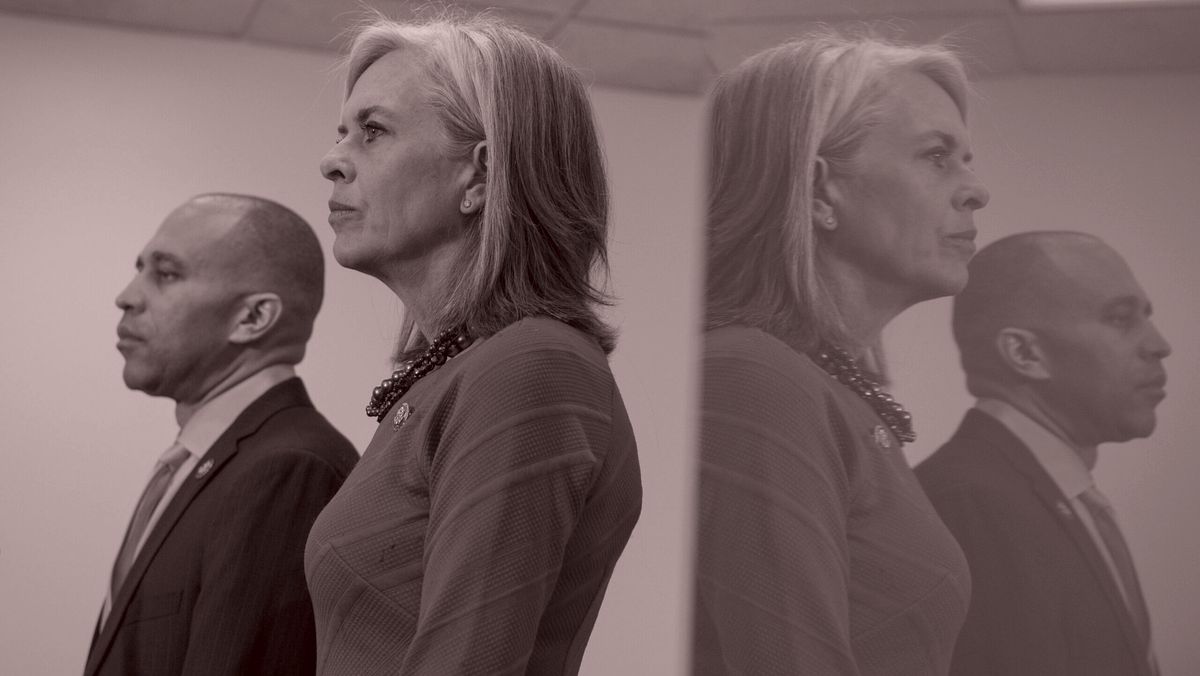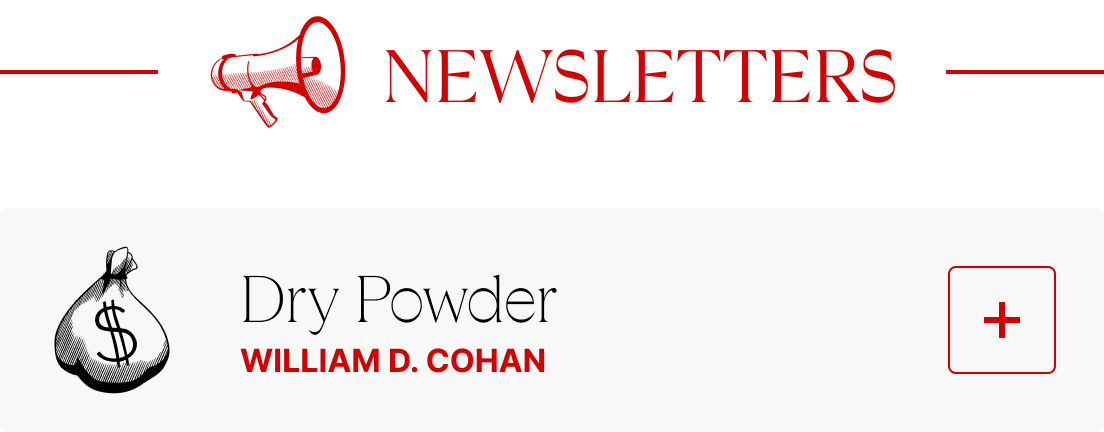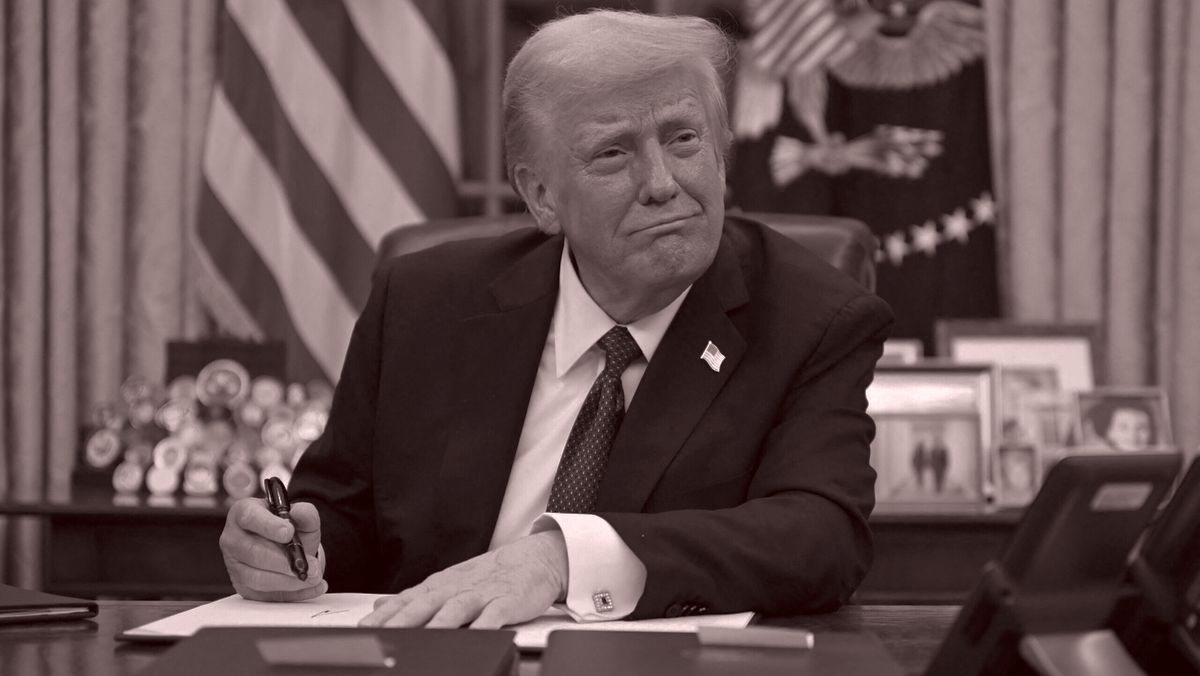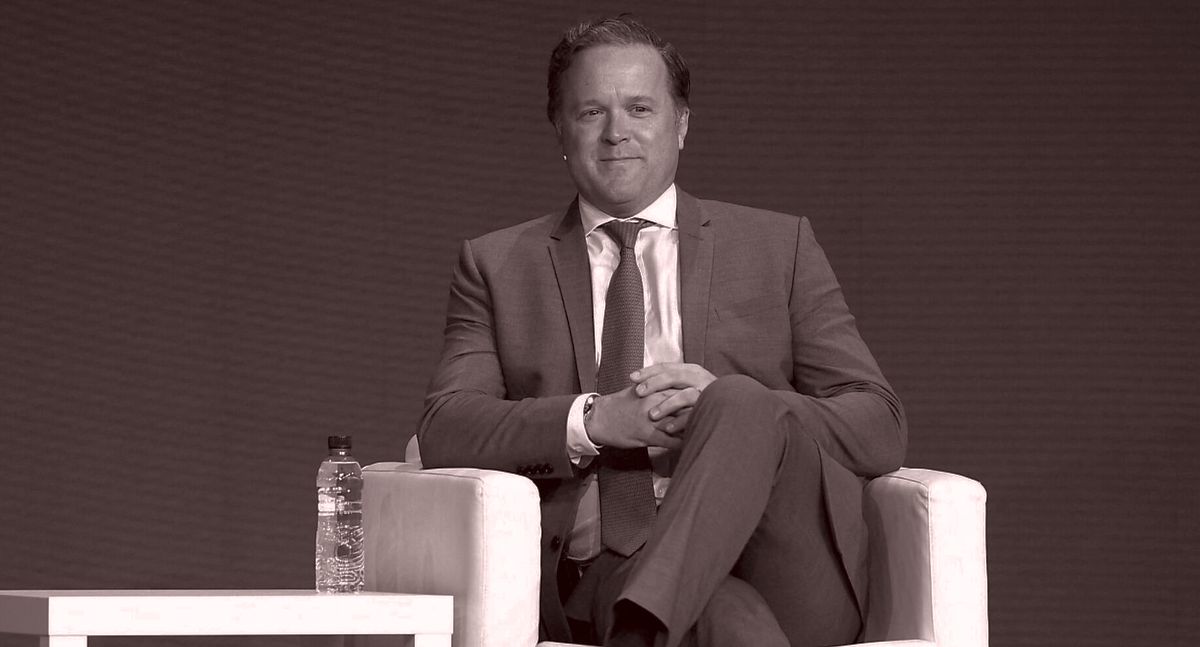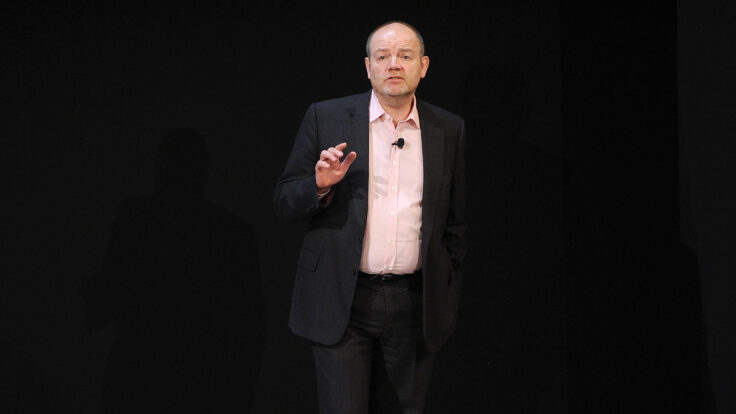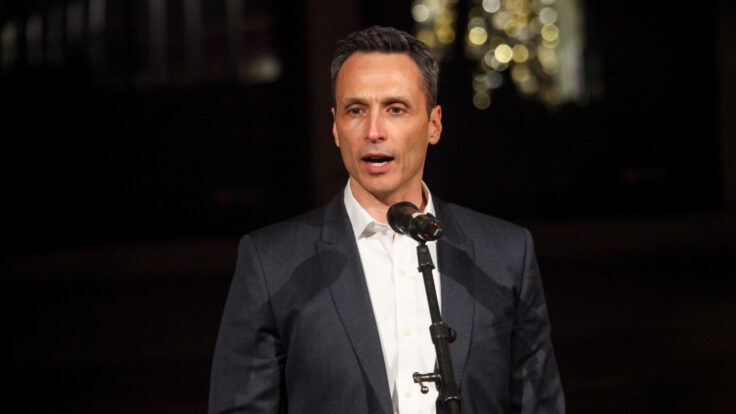Welcome back to The Best & The Brightest. I’m Peter Hamby. I
hope you enjoyed yesterday’s maiden voyage from my new partner Leigh Ann Caldwell. She’s also on tomorrow’s episode of The Powers That Be previewing Tulsi Gabbard and R.F.K. Jr.’s confirmation hearings. You can find that episode here.
Tonight, our new poll on the early days of Trump 2.0, in partnership with Echelon Insights. The findings? Voters generally support Trump’s early executive orders, especially on immigration and certain culture war flashpoints, which helps explain why out-of-power Democrats are so paralyzed as they figure out how to respond. But Trump has his weak spots, including his coziness with tech billionaires, a dynamic that voters do not seem thrilled about.
But first, here’s Lauren Sherman on the fashion industry’s smoochage of Trump’s gold-plated, extremely gauche ring…
|
|
|

|
Lauren Sherman
|
|
- Trump on the runway:
Last week a fashion C.E.O. texted me, worried sick over Trump and tariffs. Another person was outraged that Suzy Menkes praised Melania’s Adam Lippes suit, and someone else was angry at me for covering—or even acknowledging—fashion’s growing relationship with the administration. Then there was the liberal C.E.O. who told me he wished he had voted for Trump, because at least he seems to be getting stuff done.
Perhaps
time will prove that Michelle Obama, who bailed on the inauguration, was the only person on the right side of history. But as I wrote last week, more folks in fashion are falling in line with Trump because it’s the easier thing to do, and many believe it’s also the necessary thing to do. Of course, the
Arnaults want to placate Trump so that he won’t apply a tariff to any of the many products they ship to the U.S. In a sense, they’re doing the dirty work of the industry at large: Who else is rich and famous enough to keep Trump’s attention?
The Arnaults, and several European executives who are more familiar with this style of politics, see Trump as a purely transactional businessman. “It might sound crazy,” one high-level European executive told me, “but, here,
everyone is genuinely happy. They believe business will be better, and everyone is tired of the hypocrisy of the left and the Democrats. And the woke movement went too far.” Let’s see how Trump reacts to their overtures. My biggest takeaway from two days in New York is that business is tough, tough, tough right now for most companies. If that requires C.E.O.s to toe the line, they will.
|
|
|
Now, here’s Bill Cohan on the X debt coming home to roost…
|
|
|

|
William D. Cohan
|
|
- Wall Street looks for an X
exit: On Friday night, The Wall Street Journal published what appears to be a strategic leak suggesting that the syndicate of banks holding the $13 billion in debt from Elon Musk’s X deal are looking to market the loans, which have been held hostage on their balance sheets since October
2022, for something like 90 to 95 cents on the dollar. This leak was presumably designed to notify potential buyers that Morgan Stanley, Bank of America, and Barclays, among others, don’t want to sell the debt for less than 90 cents on the dollar. Of course, even if the debt could be sold at 90 cents, that 10 percent hit represents a meaningful principal loss of $1.3 billion, albeit spread across a handful of institutions.
The Twitter journey may have worked out indirectly for
Musk. His cannibalized platform, which Kara Swisher has dubbed “the Nazi porn bar,” helped him worm his way into Trump’s embrace, alongside a nine-figure campaign check. His astonishing wealth has doubled in recent months, and now sits around $434 billion—making the $44 billion Twitter deal seem quaint. And yet, Twitter itself has apparently been a financial disappointment. “Our user growth is stagnant, revenue is unimpressive, and we’re barely breaking even,” Musk wrote to
employees a month ago, according to the Journal. (Elon posted on X that he did not send any such email.)
Not surprisingly, the 2023 founding of xAI, Musk’s artificial intelligence shop, has made X more valuable, at least on paper. The private startup—whose chatbot, Grok, is now integrated into X—is said to be worth $50 billion already. Since X owns something like 12 percent of xAI, I’m told, that’s an extra $6 billion or more of value that’s suddenly accruing to X and
giving lenders some confidence to go to market with their loans, and not be embarrassed by what they hear from buyers. We’ll see. Almost any other owner of X would have defaulted by now, assuming he or she were relying on the company’s cashflow to make the interest payments. But Musk has been paying the roughly $1.3 billion in annual interest himself, which is probably why the selling banks think the paper should trade at or near par.
Still, that 90 cents strikes me as wishful
thinking. While the banks are intentionally warning potential buyers that they won’t be able to pick up the X debt on the cheap, it’s a safe bet that the company is no longer worth anything near the $44 billion Elon paid for it. It’s also more than likely that the $31 billion of equity invested in the deal—$24 billion of which came from Elon and the balance from Elon’s buddies such as Larry Ellison and Marc Andreessen—is long gone.
With the equity
at zero, how much is the $13 billion of X debt worth? Is it 50 cents on the dollar, as I’m sure the distressed debt buyers in the market think, or the 90 to 95 cents that the banks leaking to the Journal are hoping for, with that dash of xAI? We’ll soon find out…
[Read More]
|
|
|
Democrats have been rendered speechless not just by the sweep of Trump’s victory, but
also by the realization that his popularity has never been higher. A new Puck/Echelon poll illuminates his weaknesses—and how the likes of Whitmer and Pritzker could take advantage.
|
|
|
It’s hard to think of a worse time for a Democrat to go on a book tour, but
Gretchen Whitmer is out there braving the cold. The Michigan governor, and putative presidential wannabe, has just published a “young adult” version of her book True Gretch, a slim autobiography with “lessons for anyone who wants to make a difference.” (True Gretch, which sounds like a spoof Puck headline, really is an inexcusable title for a memoir…) Whitmer showed up Monday on CBS This Morning to hawk the book, and offered a few lessons on how to
talk like a Democrat who isn’t totally sure what to say after her party got shoved into a locker by Donald Trump.
Hosts Vladimir Duthiers, Gayle King, and Tony Dokoupil asked about Trump, his swift crackdown on illegal immigrants, the threat of tariffs, and the governor’s take on the state of the Democratic Party. Whitmer, an occasionally
talented politician, responded with some pablum—the same stuff you’re hearing a lot from Democrats right now, in state capitals and the halls of Congress. A few examples:
“I am not out looking for fights. I am always looking to collaborate.”
“I am focused on moving forward and finding common ground where
we can.”
“I am not against tariffs, per se, but we have to be strategic.”
The interview wasn’t bad or embarrassing. It was just rote, cautious, and forgettable—a manifestation of where Democrats are right now in the first week of Trump 2.0, which looks very different from his first tour in office. Back
then, the American public was stunned, Trump was unprepared, and Democrats were in permanent attack mode. It was a moment that gave rise to a new generation of Democratic politicians, including Whitmer, who defined themselves almost completely as Trump antagonists.
Indeed, for half a decade, Democrats from city councils to presidential debate stages were running mostly just to stop Trump, competing
to out-outrage one another in the process. What were Democrats actually for? Certain values, sure: multiculturalism, the middle class, healthcare, higher taxes on billionaires, abortion rights. But at every turn, they were stymied, terrified of offending lefty interest groups or activists and the surplus elites who staff campaigns. At the same time, the party seemed to live in fear of pissing off wealthy donors, suburban centrists, and lunchbucket labor types alike.
As a consequence, Whitmer-style equivocation has become the lingua franca of the party. This familiar manner of speech—on the one hand, on the other—is inescapable now that Trump and Republicans run the government, with high approval ratings for not just the president but also many of the policies he’s implementing.
Take Whitmer’s response on This Morning to the ICE raids unfolding around the country right now. “We do have a problem at the southern border. I have sent my national guard down to the border to help with surveillance under both a Biden administration and a Trump administration,” she said. “But we also need to treat people with dignity and follow the law. As we see this continue to play out, we will assess how we conduct ourselves in the state of Michigan.”
You can’t blame Whitmer or her colleagues for playing it safe. Democrats haven’t been this unsure about which way the wind was blowing since, what, 2005? At least in 2017, they had Trump to howl at. Now? “We will assess how we conduct ourselves in the state of Michigan.” To be fair, what else is an ambitious Democrat to say? She isn’t the only one playing four corners. In California, Gavin
Newsom is making nice with Trump because he has to—the state needs federal disaster relief after the brutal wildfires here in Los Angeles.
I also took note last week of a proactive email sent to reporters from the office of J.B. Pritzker, the governor of Illinois, after news broke that ICE would possibly be starting its illegal immigrant roundups in Chicago. The memo included helpful
background, but Pritzker’s office was not interested in talking about immigration. Instead, the email flagged how Pritzker “is getting big things done” for working families in Illinois, helping small business owners, and protecting disabled workers. “If you are interested in more information on immigration law in Illinois, please let us know and we can share some more information later,” the note explained. “But, as you can see below, he has a busy week ahead being Governor of
Illinois!”
|
“The
Wins Keep Piling Up”
|
The White House, meanwhile, would like us to know that Trump is winning. A
braggy press release from the White House landed in reporters’ inboxes on Monday, with a headline that never would have seen daylight in Joe Biden’s office: “WEEK ONE: The Wins Keep Piling Up!” According to the White House comms shop, “Trump’s first full week back in office was the most significant in modern history, punctuated by strong, swift action to correct course after four years of disaster.”
I’d glanced at that email after scanning the results of our new poll in partnership with Echelon Insights, which surveyed likely voters last Wednesday through Friday, right after Trump signed a blizzard of executive actions and news coverage of the new administration started to kick in. It turns out that, so far, voters are mostly in favor of what Trump is doing—which explains why so many Democrats are talking these days about working with Trump rather than against him. (Or
just dodging questions about what he’s up to.)
Trump has some initial goodwill with the American public, as any incoming president typically would. Echelon found that Trump had a 51 percent job approval rating—not amazing, but still one of the highest ratings he’s ever achieved as president. What’s more, 39 percent of voters say the country is heading in the right direction, compared to 50 percent who say
it’s on the wrong track. Again, not a great number at first glance, but the right direction number has climbed almost 10 points compared to Echelon’s poll after the November election. Trump’s favorable rating is also now 10 points higher than Biden’s—and two points higher than that of Kamala Harris, his ultimate opponent last year.
Trump’s best issue with voters—perhaps no
surprise, given how much the White House is hyping this week’s ICE arrests and deportation flights—is immigration. Right now, 55 percent of voters approve of the way Trump is handling immigration, with 40 percent saying they “strongly approve” of his immigration actions. It’s not just Republicans, either. Roughly half of independents approve of Trump’s immigration moves so far, and almost a quarter of Democrats do, too. Meanwhile, more than a third of Hispanic voters expressed support for
Trump’s immigration policies, although a majority of Hispanics (62 percent) are opposed.
As for the raft of executive orders Trump signed on his first day in office, voters generally support them by a 10-point margin (52 percent support versus 42 percent opposed). Opinions get mixed, though, when voters are asked about the specifics. The Puck/Echelon poll found support for Trump’s order requiring federal
workers to return to the office five days a week (61 percent support); his insistence on a federal government policy enshrining only two genders (58 percent); his declaration of a national emergency at the southern border (57 percent); his decision to delay the federal ban on TikTok (50 percent); and somewhat less support for his elimination of D.E.I. programs in the federal government (46 percent).
Strikingly,
on the TikTok ban, a sizable majority of voters (67 percent) said “the Chinese government is using TikTok to gather the personal data of Americans.” But most voters also supported Trump’s order to delay the TikTok ban-or-divest law, and only 33 percent said the government should ultimately ban the platform from the United States. (Usual disclosure: I host a show for Snap, a TikTok competitor.) Other Trump executive orders are less popular: ending birthright citizenship (42 support to 47
percent oppose); withdrawing from the Paris Climate Accords (34 percent support to 41 oppose); and pardoning the January 6 defendants (32 percent support to 52 percent oppose).
Trump’s decision to spare the January 6 rioters from prison—with pardons, commutations, and clemencies—was by far the most unpopular decision of his early presidency. But voters were also concerned about Trump palling around with
tech billionaires, an inauguration spectacle I wrote about last week, as the new president invited a freshly scrubbed platoon of C.E.O.s to join him at his swearing-in and the parties that followed—tech titans like Elon Musk, Meta’s Mark Zuckerberg, Amazon’s Jeff Bezos, OpenAI’s Sam Altman,
Google’s Sundar Pichai, and TikTok’s Shou Zi Chew.
Most Americans are uneasy about Trump cozying up to the Silicon Valley set in such public—and possibly transactional—fashion. Echelon asked voters to choose between two descriptions of how they’re thinking about Trump and the billionaire tech class. In response, 56 percent of voters concurred that “Tech billionaires
and executives should not get too close to the president because it is dangerous for the country and wealth shouldn’t buy access to power.” Only 31 percent chose the other response: “Tech billionaires and executives play a vital role in the American economy and should therefore have a close relationship with the president.”
Trump looks like he’s siding with the billionaires, for now—or perhaps they’re siding with him.
The results of the Puck/Echelon poll suggest voters might be willing to overlook any perceived favor-trading among Trump and his new social circle if they feel like they’re coming out ahead in the bargain. But Trump may be inadvertently seeding a future populist backlash in the process—especially if, or when, Republicans slice entitlements to fund the tax cuts that Elon and his rich pals have been promised. If Whitmer and other Democrats are smart, they’ll find a way to capitalize in a way that
doesn’t leave voters cringing.
|
|
|
Unique and privileged insight into the private conversations taking place inside boardrooms and corner offices up and down Wall Street,
relayed by best-selling author, journalist, and former M&A senior banker William D. Cohan.
|
|
|
Puck senior political correspondent Tara Palmeri grapples with the aftermath of what may be the most chaotic and consequential
presidential election cycle of our lifetime. With 15 years covering politics, Tara speaks with the smartest political minds to discuss what’s happening behind the scenes in Washington, D.C., from the campaign trail to the Capitol.
|
|
|
Need help? Review our FAQ page or contact us for assistance. For brand partnerships, email ads@puck.news.
You received this email because you signed up to receive emails from Puck, or as part of your Puck account associated with . To stop receiving this newsletter and/or manage all your email preferences,
click here.
|
Puck is published by Heat Media LLC. 107 Greenwich St, New York, NY 10006
|
|
|
|

